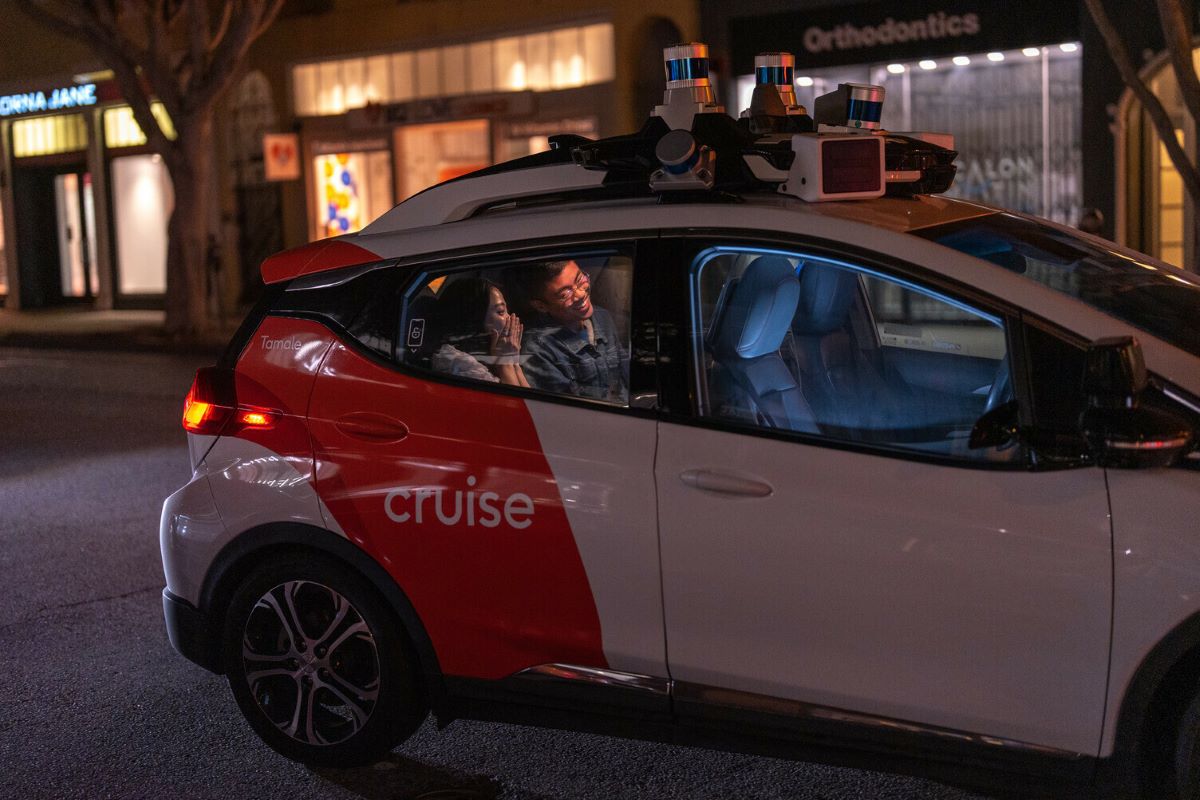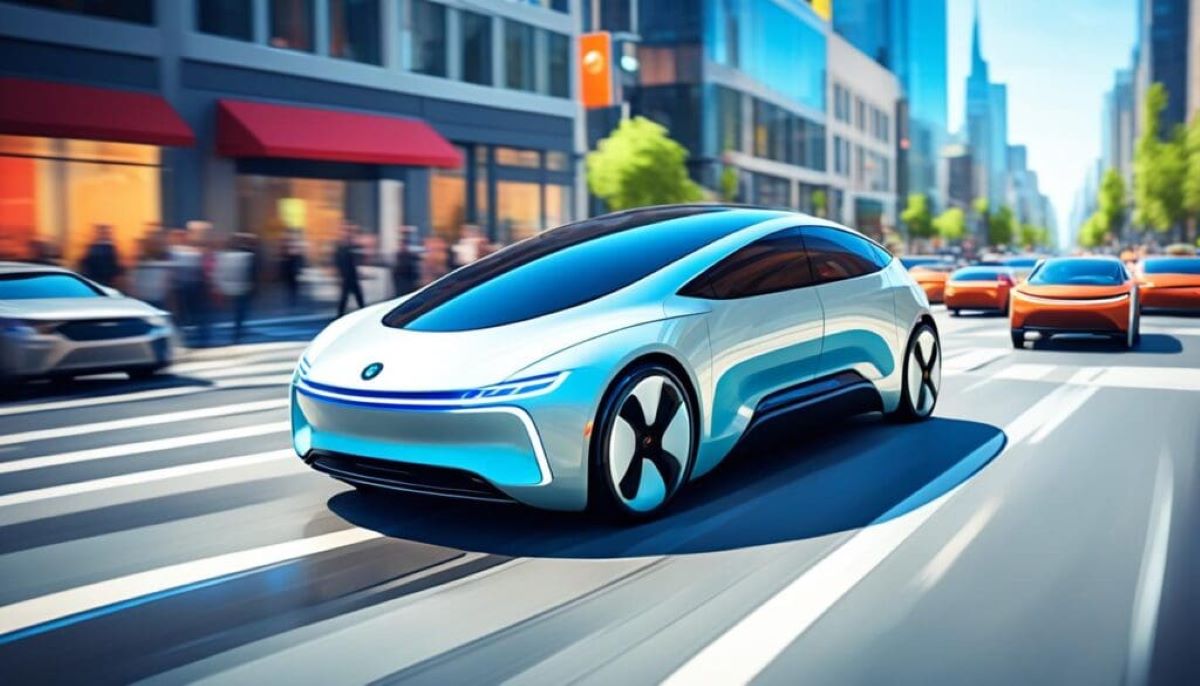A few weeks ago, I took a tour of San Francisco in one of Waymo’s self-driving cars. As we cruised through the city, I was struck by how commonplace these vehicles had become.
Driverless cars were a frequent sight on the streets, and unlike in the past, tourists no longer gawked in amazement as they passed by. The technology had seamlessly integrated into the urban landscape.
Inside the vehicle, it was clear that Waymo was striving to cultivate a similar sense of ease for passengers. The all-electric car greeted riders by name and played music as they stepped inside.
A screen in front of the rear seats provided a real-time map of the journey and allowed adjustments to temperature and music settings.
Another screen beside the steering wheel displayed a visual representation of the car’s surroundings. As we drove, I could see passengers in buses nearby, dogs crossing ahead, and children skipping along the sidewalks.
Waymo’s goal is to ensure passengers see what the vehicle sees—to build trust in its capabilities.This effort is part of a broader movement within the autonomous ride-hailing industry.
The technology powering these self-driving cars is already operational in select cities worldwide, but the challenge facing Waymo and its competitors is persuading people to step inside.
“There is something very important about being able to know where the car is going, that the car sees what you’re seeing,” says Megan Neese, Waymo’s head of product and customer research, as she sits beside me during our San Francisco tour.
However, research suggests that both American and British consumers remain hesitant about using self-driving taxis, with safety concerns being a major barrier.
Many people hold autonomous vehicles to a higher safety standard than traditional cars, making trust in the technology and its manufacturers a key factor in adoption.
For Waymo, the solution lies in instilling confidence in its robotic systems. Neese explains that in the company’s next-generation vehicle, seats will remain forward-facing, with a steering wheel present.
This traditional layout, akin to a conventional taxi, helps riders feel more secure by maintaining a familiar sense of direction.
Waymo, a subsidiary of Google’s parent company, Alphabet, launched its driverless taxi service in 2020, operating without a human safety driver. Today, the company facilitates 150,000 paid rides per week in San Francisco, Los Angeles, and Phoenix.
In the broader ride-hailing market, Waymo remains small—Uber, for instance, manages approximately 200 million trips weekly worldwide.
However, the autonomous sector is rapidly expanding and highly competitive. Passenger comfort and trust will be key battlegrounds in the race for market dominance.
Amazon-backed Zoox, expected to enter the market in 2025, is taking a different approach to customer trust.
Instead of showing riders what the vehicle sees, Zoox aims to create a more immersive experience, encouraging passengers to relax and disengage from the driving process.
Several weeks after my Waymo ride, I visited Zoox’s headquarters in Foster City for a test ride in one of its vehicles. Unlike the Waymo experience in a bustling city, this ride took place on a controlled route between two office buildings.
Zoox’s vehicle is purpose-built for autonomy, designed to travel in either direction without a traditional front or rear.
It lacks a steering wheel, pedals, or forward-facing windows. Instead, four seats are arranged in a bay seating style, with sliding doors on both sides.
Small screens allow passengers to adjust temperature and music, while a wireless charging pad sits between the seats.
Dark green vegan leather seats and a ceiling adorned with twinkling lights gave the interior a futuristic, theme-park-like ambiance.
To enhance consumer confidence, Zoox has also begun revealing details about its Fusion Center, where human operators can remotely guide vehicles through unfamiliar situations by laying out digital “breadcrumbs” for the car to follow. During testing, remote guidance was needed for only 1% of the total driving time.
Waymo had previously been discreet about its teleoperations support but recently disclosed that its Fleet Response team is available to assist vehicles in ambiguous scenarios.
Unlike Zoox, which offers direct guidance, Waymo’s system provides decision-making support rather than remote control.
By contrast, General Motors-owned Cruise faced a major setback when one of its driverless cars struck and dragged a pedestrian for 20 feet in October 2023.
The incident led to the suspension of its California operating permit, executive resignations, and the layoff of 900 employees.

Since then, Cruise has resumed testing with human safety drivers in Phoenix and Dallas and has secured a deal to integrate its vehicles into Uber’s platform.
While self-driving taxis are being tested globally, the most advanced deployments are in the US and China.
Dozens of American cities have approved trials for robotaxis. Waymo currently operates the largest fleet in the US, with over 700 vehicles across San Francisco, Los Angeles, and Phoenix.
The company plans to expand to Austin and Atlanta in 2025 in partnership with Uber.Zoox is also testing its vehicles in San Francisco, Las Vegas, Seattle, Austin, and Miami.
Meanwhile, Cruise has yet to announce public ride availability as it continues testing in Phoenix, Houston, and Dallas.
Other autonomous ride services in development include Toyota-backed May Mobility, which has government-funded programs in several US states.
China leads the world in autonomous vehicle testing. Authorities have issued roughly 16,000 permits for self-driving cars and buses across 20 cities. In Beijing alone, 33 companies are running trials within a massive 1,160-square-mile area.
AutoX, backed by Alibaba, operates in Beijing, Guangzhou, Shenzhen, and Shanghai, while Baidu’s Apollo Go provides driverless rides in several major cities.
Apollo Go has drawn attention for its aggressive pricing strategy, which has led to friction with taxi drivers.
In early 2024, one of its vehicles collided with a pedestrian, prompting scrutiny over its ability to handle unexpected situations.
Apollo Go has faced additional public perception challenges, with viral social media incidents highlighting its limitations.
One vehicle once stopped in the middle of traffic for a plastic bag, while another got stuck in a standoff with another robotaxi as both tried to yield the right of way. In response, the company has updated its software to prevent such issues.
Beyond China and the US, autonomous vehicle pilots are underway in Japan, Singapore, South Korea, Australia, and several European countries.
Japan is preparing for its first robotaxi deployment in Tokyo, while May Mobility has launched a service in Nagoya, targeting an aging population in need of transportation.
The UK has also taken a step forward with the passage of the Autonomous Vehicles Act, paving the way for robotaxis by 2026.
Croatian startup Verne, in partnership with Intel’s Mobileye, is developing a two-seater vehicle with no steering wheel, set to launch in cities across Europe, the UK, and the Middle East.
Despite advancements, scaling autonomous services remains a challenge. GM recently reported a $435 million loss for Cruise, even though it paused operations for the past year.
Hyundai-backed Motional, which had completed 100,000 Uber and Lyft rides in Las Vegas, shut down in May 2024 due to financial difficulties.
“Large-scale driverless deployment will not happen overnight,” says Motional’s CEO, Karl Iagnemma. “While our technical progress has been exciting, widespread adoption remains a future goal rather than a present reality.”
Waymo has also fallen short of its initial target of one million trips per day with 20,000 cars.
New competitors continue to enter the market. Tesla recently announced its long-awaited Cybercab robotaxi, which will have no steering wheel or pedals and is set to launch in 2026.
Additionally, Elon Musk has proposed a system where Tesla owners can rent out their vehicles as autonomous taxis, with testing already underway in San Francisco.
“For Tesla employees in the Bay Area, we already offer ride-hailing capabilities,” Musk said. “Right now, a safety driver is present, but we’re moving toward full autonomy.”
However, regulatory hurdles remain. Tesla currently has permission to test self-driving cars in California only with a safety driver. Musk, now part of President-Elect Donald Trump’s administration, has vowed to push for updated regulations.
GM’s CEO, Mary Barra, has also expressed frustration over the slow pace of regulatory change, citing federal laws that still require steering wheels and airbags.
Ultimately, the biggest challenge in the autonomous vehicle race may not be technology or regulation but public trust.
Until hesitant passengers feel comfortable stepping into a driverless car, mass adoption will remain elusive.

